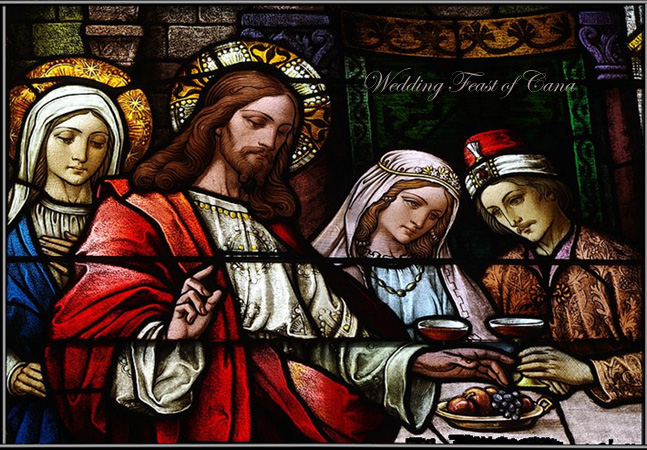
by Rt. Rev'd Doctor Amat, Bishop of Monterry California, 1864
The Treatise on Matrimony by the Rt. Rev. Dr. Amat, the first Bishop of
Los Angelus, is a concise explanation of Matrimonial Dogma that is essential for anyone called to the married state. In this age of Apostasy when the true doctrines
of the Church on the Sacrament of Marriage are suppressed or denied it is
essential to know what the true Catholic Church has always taught.
God said: "It is not good for man to be alone, let us make him a help like unto himself" (v. 18); and having formed the first woman out of one of the ribs of Adam, by which God intended to teach them, that they were to treat each other as companions and not as servants, God brought the woman to Adam, "And Adam said, this now is bone of my bones, and flesh of my flesh; she shall be called woman, because she was taken out of man; wherefore a man shall leave father and mother, and shall cleave to his wife, and they shall be two in one flesh" (vv. 23, 24).
That these words, although pronounced by the first parent of the human race, were pronounced by God's authority establishing matrimony, is authoritatively declared by our Lord Jesus Christ, answering the question proposed to him by the Pharisees, whether "it were lawful for a man to put away his wife for every cause; he answered and said to them, have ye not read, that he who made man in the beginning, made them male and female? and he said, for this cause shall a man leave father and mother, and shall cleave unto his wife; and they two shall be in one flesh; wherefore they are no more two, but one flesh. What therefore God hath joined together, let not man put asunder." (Matt. c. 19, v. 3, etc.) This matrimonial contract, having the seal of God's authority, the Supreme Author of nature, and being according to the end which he proposed to himself in the formation of the two first parents of the human race, even before their prevarication, could not be but good and holy; contrary to the teaching of those ancient heretics, who, as Saint Paul says, writing to his disciple Timothy, departed "from the faith, giving heed to spirits of error, and doctrines of devils," and "forbidding to marry," (First Tim. ch. 4, v. 1, and following) as coming from an evil principle. This monstrous doctrine needs no confutation, since it is evident by the very words of its institution, that matrimony was established by the Almighty for the purpose of preventing the promiscuous intercourse of the sexes in the procreation of children, for promoting domestic felicity, and for securing the maintenance and education of children; all of which is well protected by its unity and indissolubility, being "two in one flesh," and placed out of the reach of man to dissolve the union; "what God hath joined together, let not man put asunder." Such was the matrimonial contract--from the beginning, one and indissoluble; and being such by divine institution, it was held in great veneration amongst all nations, to which the knowledge of its divine origin had reached by oral tradition from the first parents of the human race, to whom, the union of Jesus Christ with His Church, by which, as the Apostle says: (Eph. ch. 5, v. 31) "we are members of his body, of his flesh and of his bones," and which is represented by the matrimonial contract, was made manifest by divine light when he took for his wife the first woman whom he called "bone of his bones, and flesh of his flesh." Hence, before the coming of Christ our Lord, no human legislator ever dared to touch, with profane hands, the matrimonial contract, but it was left altogether under the control of religion, whose ceremonies ordinarily accompanied its celebration; such was the case among the Persians, Egyptians, Greeks, and Romans; they considered and held matrimony as a sacred thing, and used to call it "a communication of the divine and human right," and the woman by it was said to be "partaker of sacred things." Human legislation cannot loose the ties that bind the offspring to their parents; much less could it dissolve the conjugal union, far superior to the first, since by it the first is dissolved. "A man shall leave father and mother, and shall cleave to his wife." How could the human legislator separate two persons united into one and the same flesh?" And they shall be two in one flesh." No; "what God hath joined together let not man put asunder." By what has been said, it appears evident that matrimony, as an institution of God, is one, holy and indissoluble; or has three essential conditions: Unity, Sanctity, and Indissolubility. Unity: they are not two, but one flesh." Sanctity: representing the union of Jesus Christ with His church; and Indissolubility: "what God hath joined together, let not man put asunder." Unity condemns polygamy, or the plurality of wives, against the practice of Mormonism. Sanctity condemns all those who look upon matrimony as a mere civil contract, and treat it as such. And Indissolubility condemns divorce, as coming from Judaism.--page 6 - 8
To download the entire book, click on the link below.
Download the book, "Treatise on Matrimony According to the Doctrine and Discipline of the Catholic Church" http://catholicharboroffaithandmorals.com/ |
